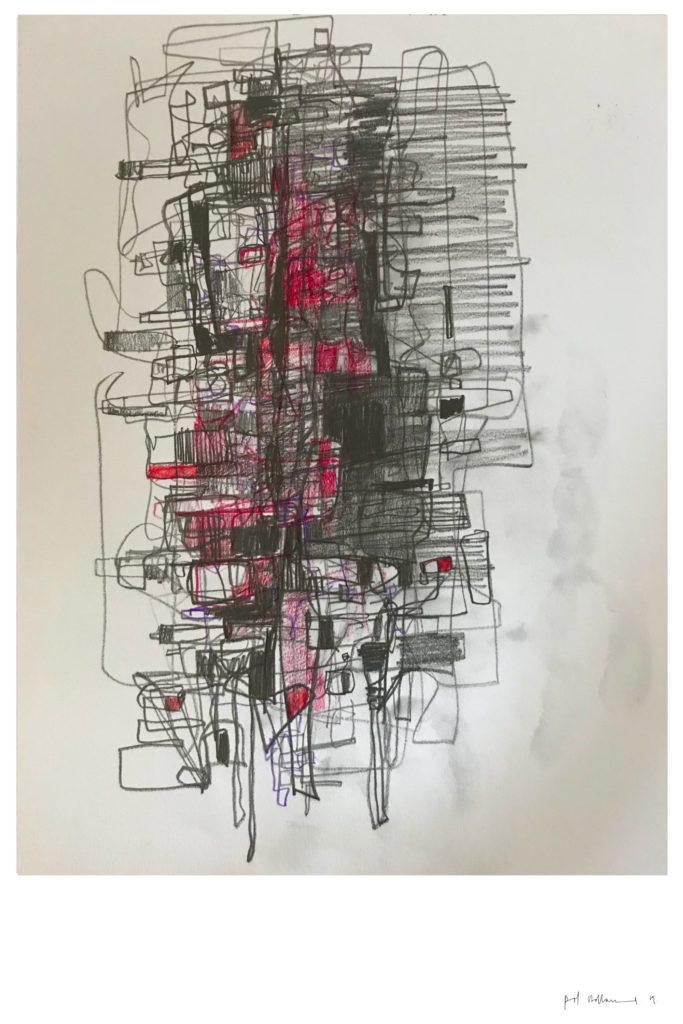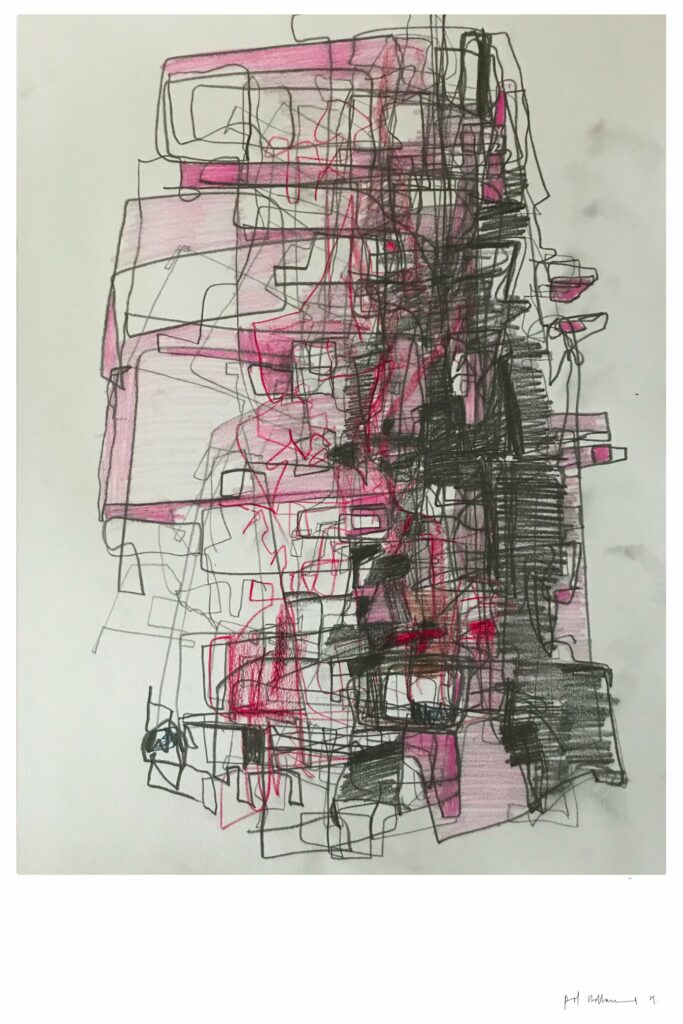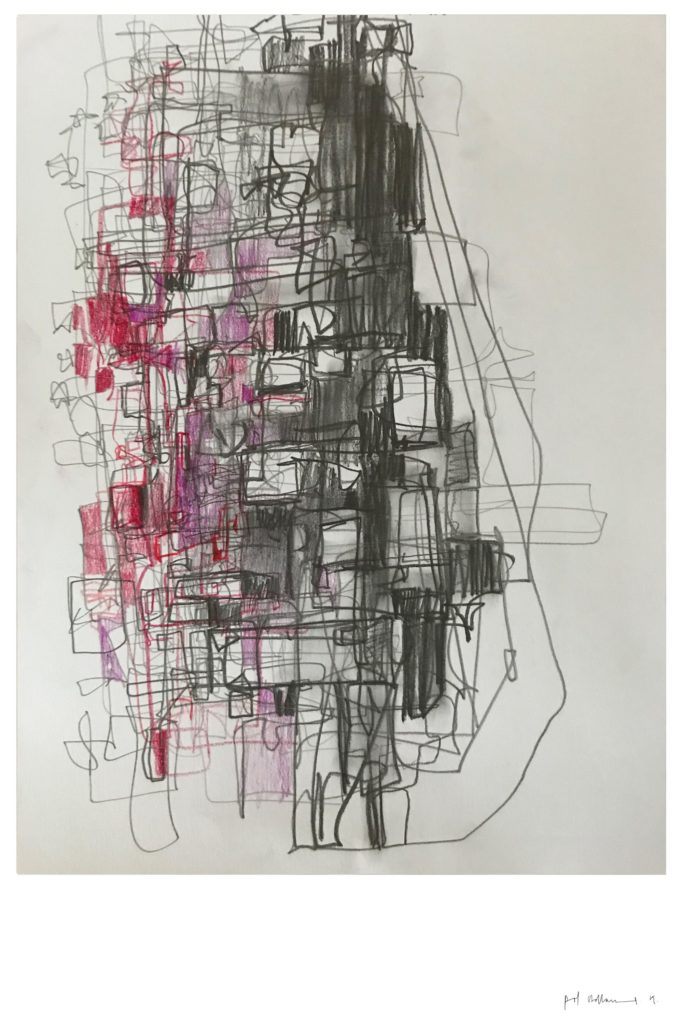A Glasgow Effect
I draw and make dens to counter the weather of Scotland and the urban dislocation that I experienced from growing up in Glasgow, a city that suffered disproportionately from devastating post-war planning policy and the imposition of industrial modern architecture. The consequences of this are described by the medical term known to health professionals as the ‘Glasgow Effect’ – a condition of hopelessness that people experience when they have no agency in determining their environment. In me, this condition manifests in anger, restlessness and a motivation to resist through drawing and making.


My fixation with the den as a primal, residential space began as a child. Growing up in urban locations, my cousin and I would try to smoke out unsupervised sites for building dens – often literally by lighting fires with stolen matches… Nowhere was off limits: on a roof, within a derelict building, in a tree, in bins, under a bridge, beneath a pylon.
As an adult, and a practicing architect, my interest in the den has continued. I continue to obsessively draw permutations of imaginary den spaces. While drawing, I lose myself in the mindful gymnastics of resolving a design in less than five minutes and capture it in a sketch. At points, my small drawings have been scaled-up onto large canvases and intermittently expressed as scale models. I have also occasionally built one.
The exercise of drawing dens serves as an exploration of the connections between ‘small architecture’ and an individual and their relationship with the world. When drawing dens I imagine them situated in exposed, idealised sites in Scotland. I call these types of den drawings ‘weatherforms’ and each is designed to address low-cloud, horizontal rain, snow, rising-damp, and darkness, taking advantage of limited sunshine rather than treating it as an obstacle.
I am also interested in the importance of narrative and the subjugation of structure. Cranes, frames, bridges or grids of any kind, offer too many possibilities. Instead, my drawings begin with a skeletal form and then I resolve an architecture. In some ways this process is like a game that I played with my children where you make a random series of marks on paper and ask the other person to make it into something, it’s the architectural equivalent…
Celebrating ways to occupy space, imagining through drawing is essential to my work as an architect. To enjoy the nuance inherent in a simple sketch that might belie an underlying agenda and personal signature. There is a television clip of Picasso being interviewed on a talk show where the host asks him to draw a bird on a sheet of paper. Picasso obliges and the host says ‘that sketch took you one minute to make, I could sell this for a fortune at auction …’ Picasso follows by saying, ‘no that is where you are wrong, that sketch took me a lifetime.’



– Tony Fretton